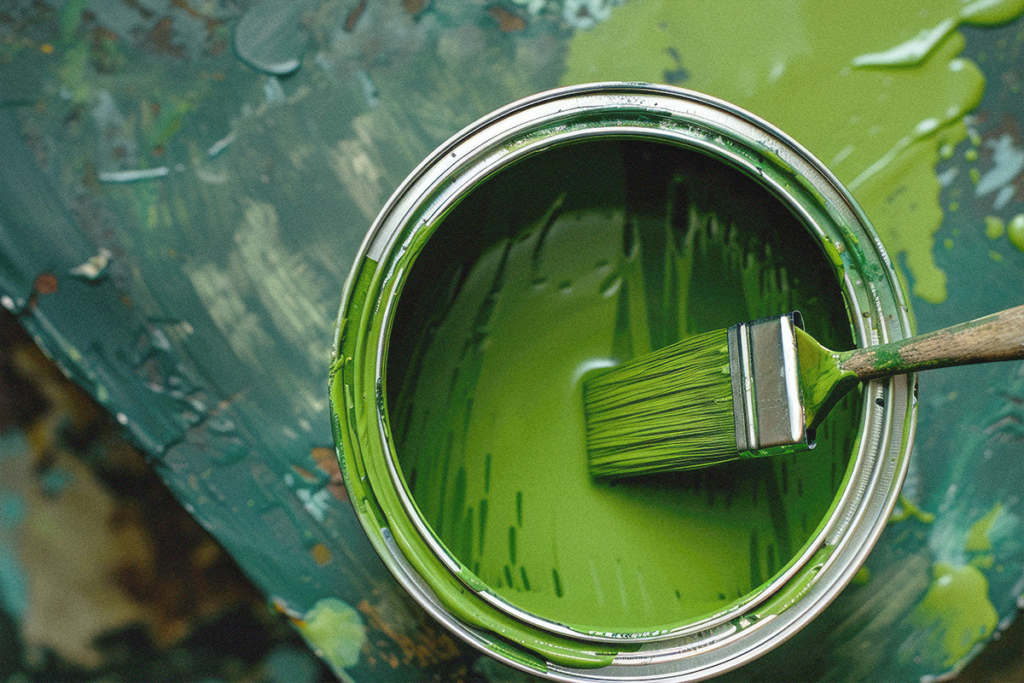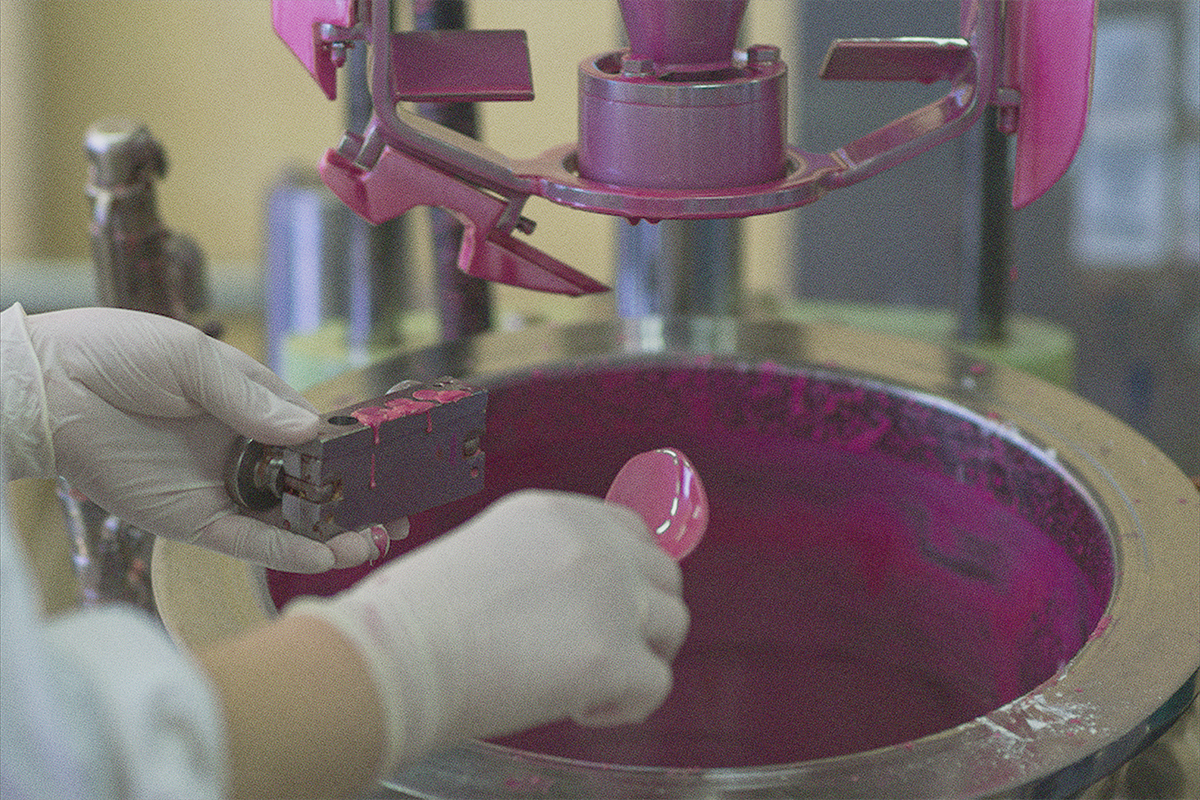 Policy Brief + Recommendations
Policy Brief + RecommendationsPFAS Central is a comprehensive resource providing the latest curated information on PFAS, encompassing press coverage, peer-reviewed scientific articles, meeting updates, job listings, and consumer guides.
This platform is a collaborative effort between the Green Science Policy Institute and the Social Science Environmental Health Research Institute (SSEHRI) at Northeastern University. The Green Science Policy Institute aims to foster responsible chemical use to safeguard human and ecological health by uniting scientists, regulators, businesses, and public interest groups. SSEHRI focuses on social science research, education, and policy work related to environmental health, with a special emphasis on PFAS through its dedicated project.

This episode featured Teresa McGrath, the Chief Research Officer for Habitable.
She digs into the environmental implications of paint components and offers scientific insights on sustainable alternatives. Some of her suggestions are even trending—popular wall treatments such as Limewash and Roman clay are healthier alternatives.

This report provides information on PFAS, their widespread presence in US drinking water, associated health risks, and recommendations from the National Academies for clinical guidance and education on PFAS exposure.


Toxic-Free Future is a leading advocate for environmental health, leveraging science, education, and activism to promote strong laws and corporate responsibility that safeguard the health of individuals and the planet.

This news article reports that the United Nations has declared the ongoing PFAS contamination of North Carolina’s Cape Fear watershed a violation of residents’ right to a clean and safe environment, urging the Environmental Protection Agency to hold the polluters accountable.
Watch this video for a summary of legislation, scientific findings and more about PFAS “forever chemicals.”
ChemSec takes on PFAS in this educational rap battle.

HBN tested 94 commercially available paint products for the presence of harmful per- and polyfluoroalkyl substances (PFAS), called “forever chemicals”. Approximately 50% of paints tested positive for fluorine, a marker of PFAS. Review the details of our findings and the recommended actions you can take.

Teresa is Habitable’s Chief Research Officer, leading our research strategies.
Almost every day, news headlines warn us of the dangers of ‘forever chemicals’, known as PFAS, used in the manufacturing of consumer and industrial products. They’re being found in our water, air, fish, and soil across the U.S. and around the globe, and our body tissues, showing up in almost every person in the US. A report by Habitable (formerly Healthy Building Network) examines the presence of PFAS in residential and commercial paint products—and the urgent need to stop their use.
We recently spoke with Teresa McGrath, chief research officer, and the report’s lead author, to discuss the team’s research findings. She shares what industry professionals can do to avoid human exposure, and discusses why—and how—manufacturers can eliminate them from paint formulas altogether.
HABITABLE:
Before we jump into the details of this groundbreaking report, can you share a little bit about yourself and your expertise as it relates to chemical sciences and paint products?
TERESA MCGRATH:
My background is in chemistry and toxicology. My entire career I have focused on green chemistry: the idea of using chemistry to help meet sustainability goals. Before joining Habitable, I led the chemical management program for Sherwin-Williams, one of the largest paints and coatings companies in the world. In that role, I focused on hazard reduction and transparency, and helped business units in meeting sustainability goals. As chief research officer at Habitable, I lead a team of researchers on studies that seek to better understand hazardous chemicals that may be present in or used to make building materials, as well as putting forward recommendations and best practices to reduce or eliminate their impacts.
H:
Habitable’s most recent report delves into the presence of PFAS chemicals in paints. Officially named perfluoroalkyl and polyfluoroalkyl substances–PFAS–are commonly called ‘forever chemicals’. Can you tell us what forever chemicals are and why they’re so harmful?
TM:
PFAS refers to a class of chemicals with over 10,000 different structures. All PFAS are very persistent chemicals. The fluorine-carbon bond of these synthetic chemicals is very difficult to break and this means that they don’t break down on their own once they get into our bodies or into the environment. Given this persistence, they are often referred to in the media as ‘forever chemicals’. These chemicals can also be bioaccumulative, meaning they build up in our bodies, and can be toxic. We don’t yet know all of the potential harm because most of these chemicals have not been tested, however a host of negative health effects have been associated with PFAS including cancer, liver damage, decreased fertility, developmental delays in children, and disrupting the natural hormones in our bodies.
H:
Can you give us an idea of the scale of this problem and why is it so important that we phase PFAS chemicals out of paint products?
TM: Architectural paints coat the inside and outside our homes, schools, and workplaces, making PFAS in paints a potential exposure concern for everyone from those who manufacture and apply the paints to those who occupy painted spaces. They’re a health and environmental concern throughout their lifecycle, from cradle to grave. And while we already know some PFAS are linked to increased health risks, we may just be scratching the surface, as some experts have suggested, we may be underestimating the dangers of these widespread chemicals.

H:
As part of this study, Habitable tested numerous different paint products and brands for the presence of toxic forever chemicals. What were the team’s findings?
TM:
We tested 94 paints for total fluorine (TF), and a subset for extractable organic fluorine (EOF), indicators of PFAS.
We selected paint samples across most brands, price tiers, gloss, base, and colorants. Samples represented eight major paints and coatings manufacturers that together have over 65% of the paints and coatings market share in North America. We found that about 50% of the paints tested positive for these indicators of forever chemicals, the detailed list is included in our report. All tested brands had at least one product that tested positive for fluorine, and at least one product that tested negative for fluorine. And while the overall percentage of PFAS present in these products is generally small (less than 1%), there is no amount of PFAS in paint that can be considered acceptable because of their health implications.
We did reach out to paint manufacturers, but none could provide us with more comprehensive information on the definitive purpose and use of these chemicals in their products. The likely assumption is they’re using these forever chemicals as a surfactant, meaning they are acting as a stabilizer helping the paints to spread and coat more evenly.
H:
According to the report results, there are numerous paint products on the market today that don’t use these harmful additives. Are these chemicals even necessary and is removing PFAS chemicals from paint a relatively easy thing to do?
TM:
While surfactants are critical to a paint formulation, there are other PFAS-free surfactants that are used for the same purpose that are safer, objectively, from an environmental and human health perspective. Half of the paints we tested didn’t show evidence of PFAS, so we know that it’s possible to formulate paint products without it.
H:
What actions should the paint industry and their suppliers take in light of these findings?
TM:
Paint manufacturers need to phase-out all use of intentionally-added PFAS. When removing forever chemicals from formulations, manufacturers should make sure that PFAS are not replaced with other hazardous chemicals such as alkylphenol ethoxylates (APEs).
To avoid regrettable substitutions and facilitate informed material selection, all alternatives must have full chemical hazard assessments. If a paint company doesn’t know the full hazard profile of a chemical or surfactant, they should consult a toxicologist to evaluate that chemical. The ChemFORWARD platform offers tools and data to help companies find safer alternatives.
In addition, manufacturers should publicly disclose all ingredients in their paints, including PFAS use at any concentration. It should be standard practice for all paint manufacturers to tell the public what they’re putting in their products, along with the toxicity profile of every ingredient.
At a high level, industry players can support bans on PFAS and regulations that require more ingredient transparency in the paint sector..
H:
And lastly, how can you source PFAS-free paint products if you’re a consumer, building professional or specifier?
TM:
All this information might feel a little overwhelming, but we have developed two tools to make it much easier. And the good news is, all of the brands we tested had at least one option that tested negative for fluorine. Specifiers can refer to Habitable’s InformedTM paint guidance resource to select safer paints, as well as our downloadable form that can be used to ask manufacturers for a paint that meets the transparency and material health attributes specified by Habitable. By following these tips you can source paint that is free of forever chemicals, and also meets other environmental best practices such as low VOC content and emissions.
Buyers can also advocate for paint companies to do better. Ask paint manufacturers to provide public disclosure of all intentionally added ingredients, using the Health Product Declaration (HPD) or Declare label.
Pediatric physician, Dr. Nicholas Newman, discusses his experience treating patients impacted by PFAS in this video by the Great Lakes Center for Reproductive and Children’s Environmental Health.

 Pollution
Pollution Health
Health